Removal Procedure
- Recover the refrigerant using an approved refrigerant recovery system.
- Remove the left front headlamp assembly to gain access to the fitting.
- Remove the compressor discharge hose from the condenser inlet.
- Raise the vehicle.
- Remove the lower splash shield.
- Remove the receiver-dehydrator hose from the condenser outlet.
- Remove the condenser bracket-to-radiator bolts.
- Facing the vehicle, pull the condenser back slightly to release it from the mounting pads. Carefully slide the condenser straight down.
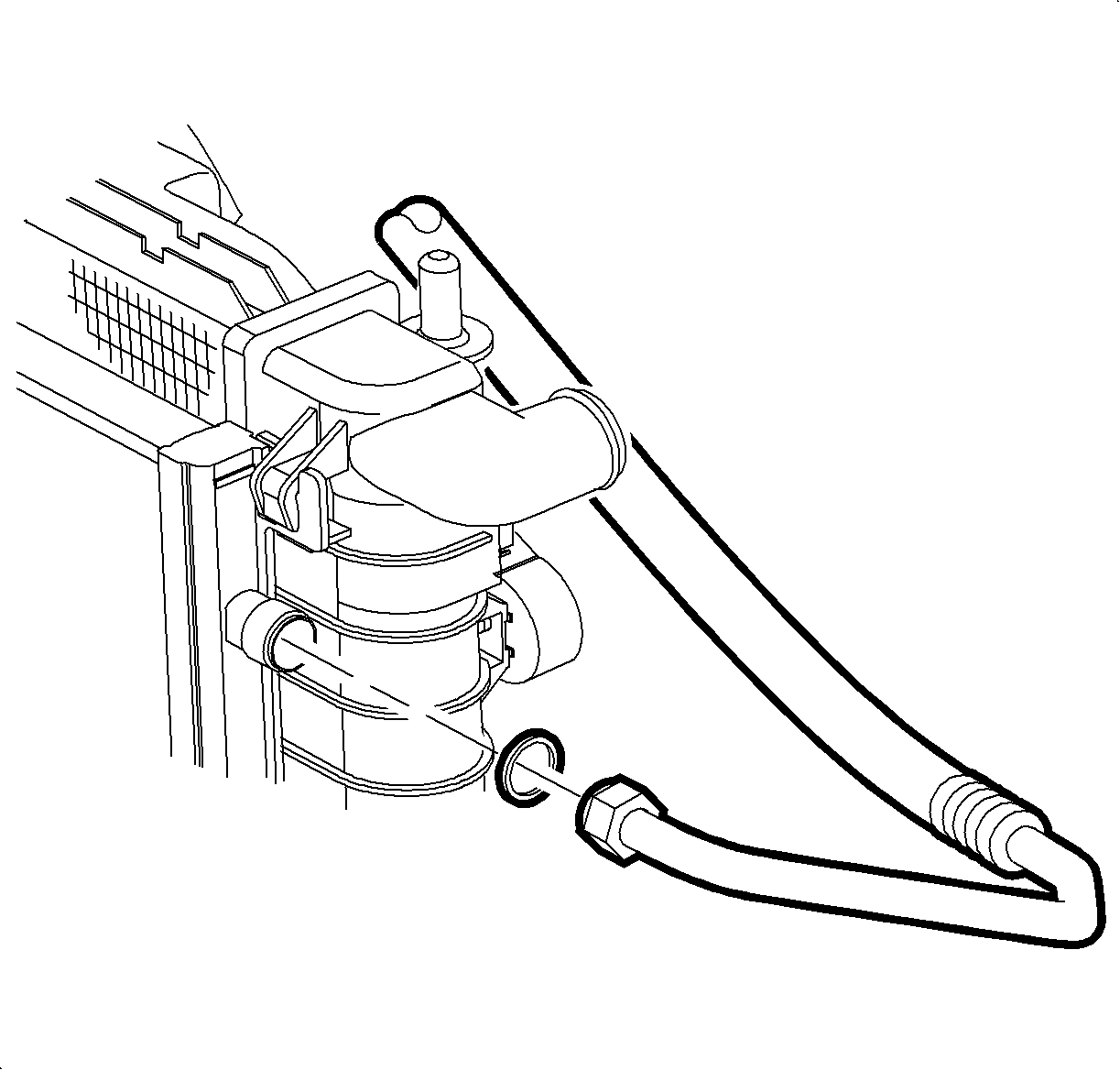
Important: Verifying the purity of the refrigerant with a refrigerant purity identifier before recovery is recommended.
Caution: To avoid any vehicle damage, serious personal injury or death when major components are removed from the vehicle and the vehicle is supported by a hoist, support the vehicle with jack stands at the opposite end from which the components are being removed and strap the vehicle to the hoist.

Refer to Lifting and Jacking the Vehicle in General Information.
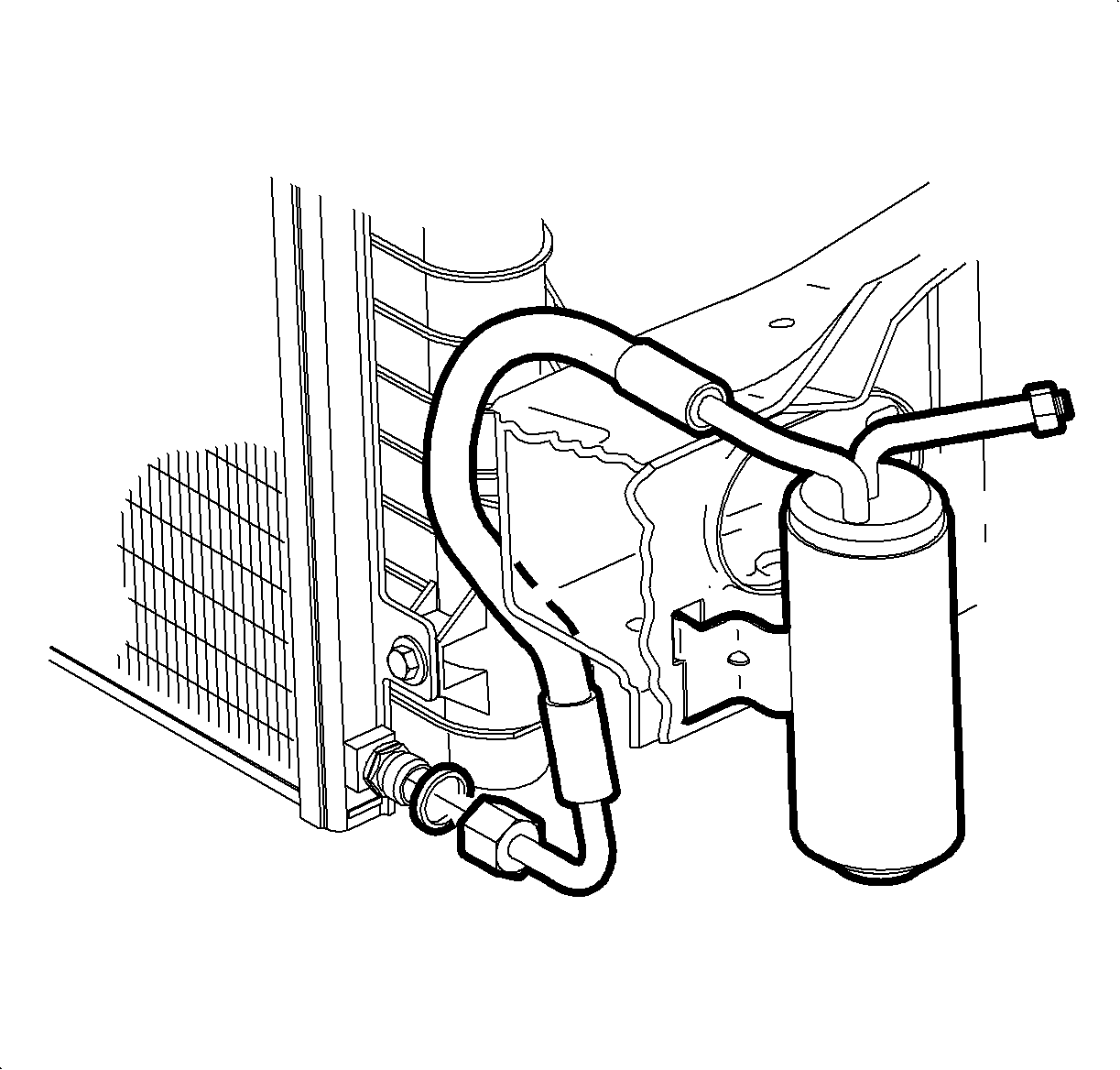
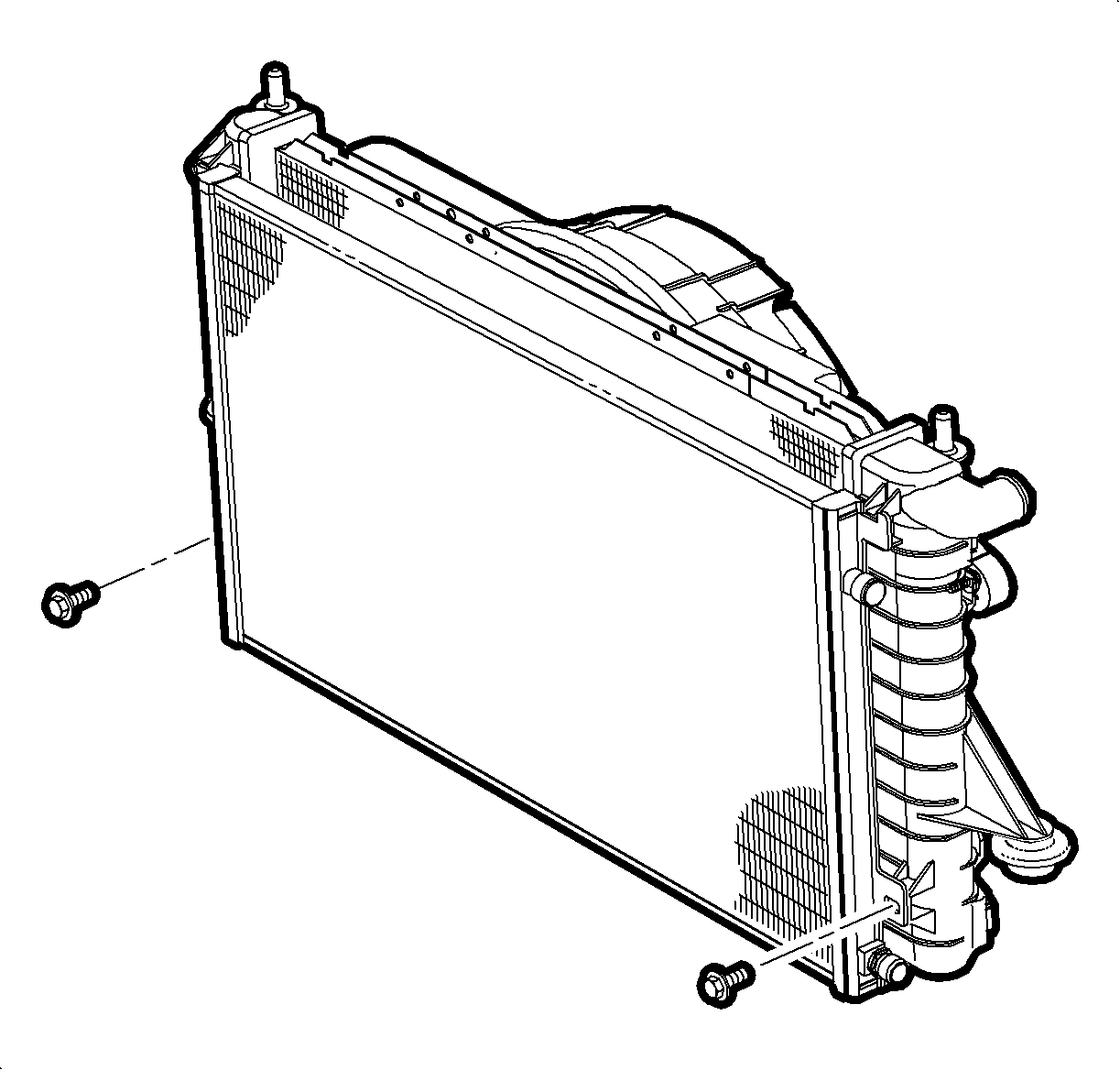
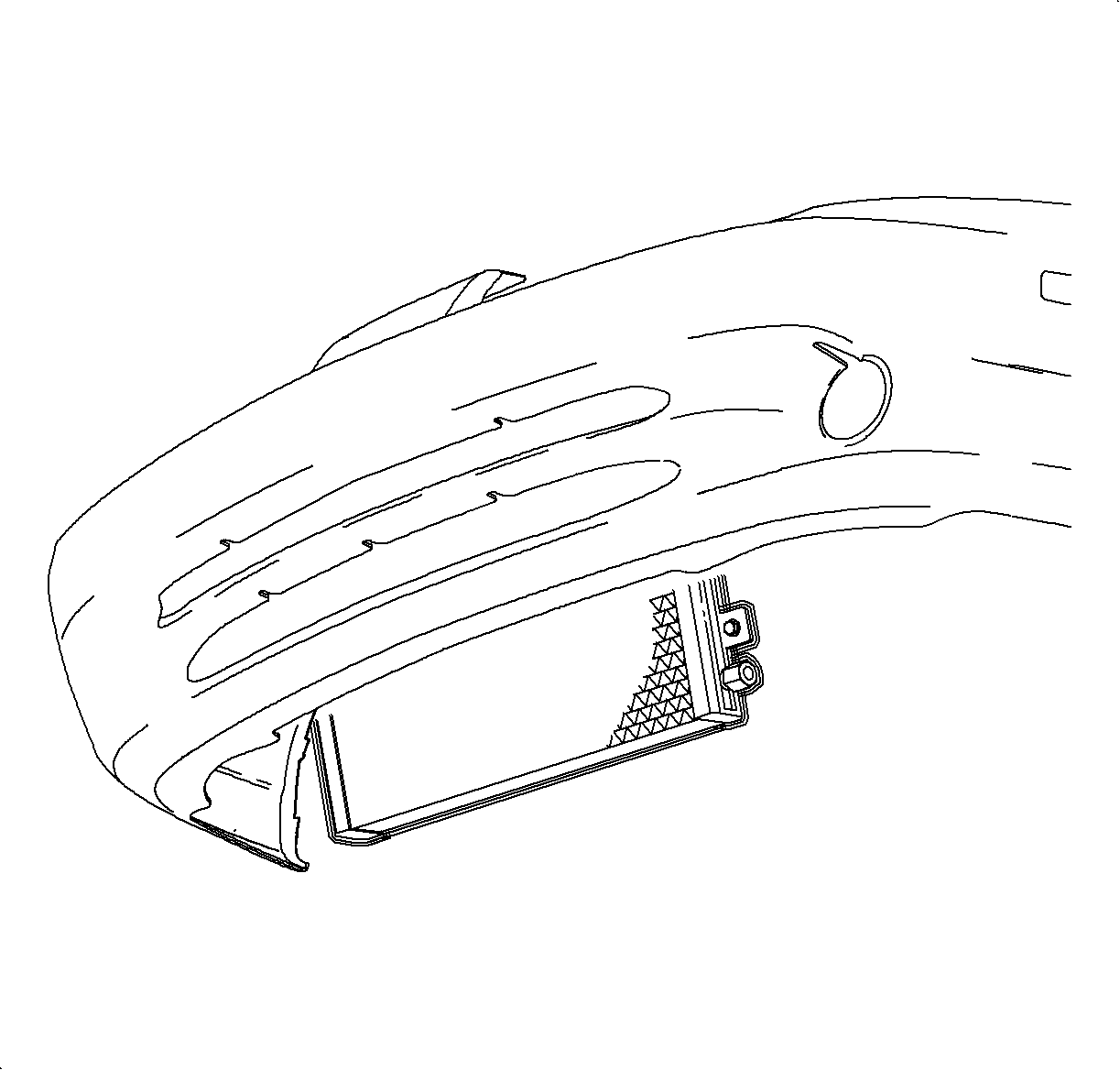
Installation Procedure
- Carefully slide the condenser up and install on the mounting pads.
- Install the condenser bracket-to-radiator bolts.
- Lubricate with R-12 Refrigerant mineral oil and install a new O-ring on the receiver-dehydrator hose.
- Install the receiver-dehydrator hose to the condenser outlet.
- Install the lower splash shield.
- Lower the vehicle.
- Lubricate with R-12 Refrigerant oil (mineral) and install a new O-ring on the compressor discharge hose.
- Install the compressor discharge hose to the condenser inlet.
- Tighten the fitting.
- Install the left front headlamp assembly.
- Evacuate, charge, and leak test the A/C system.
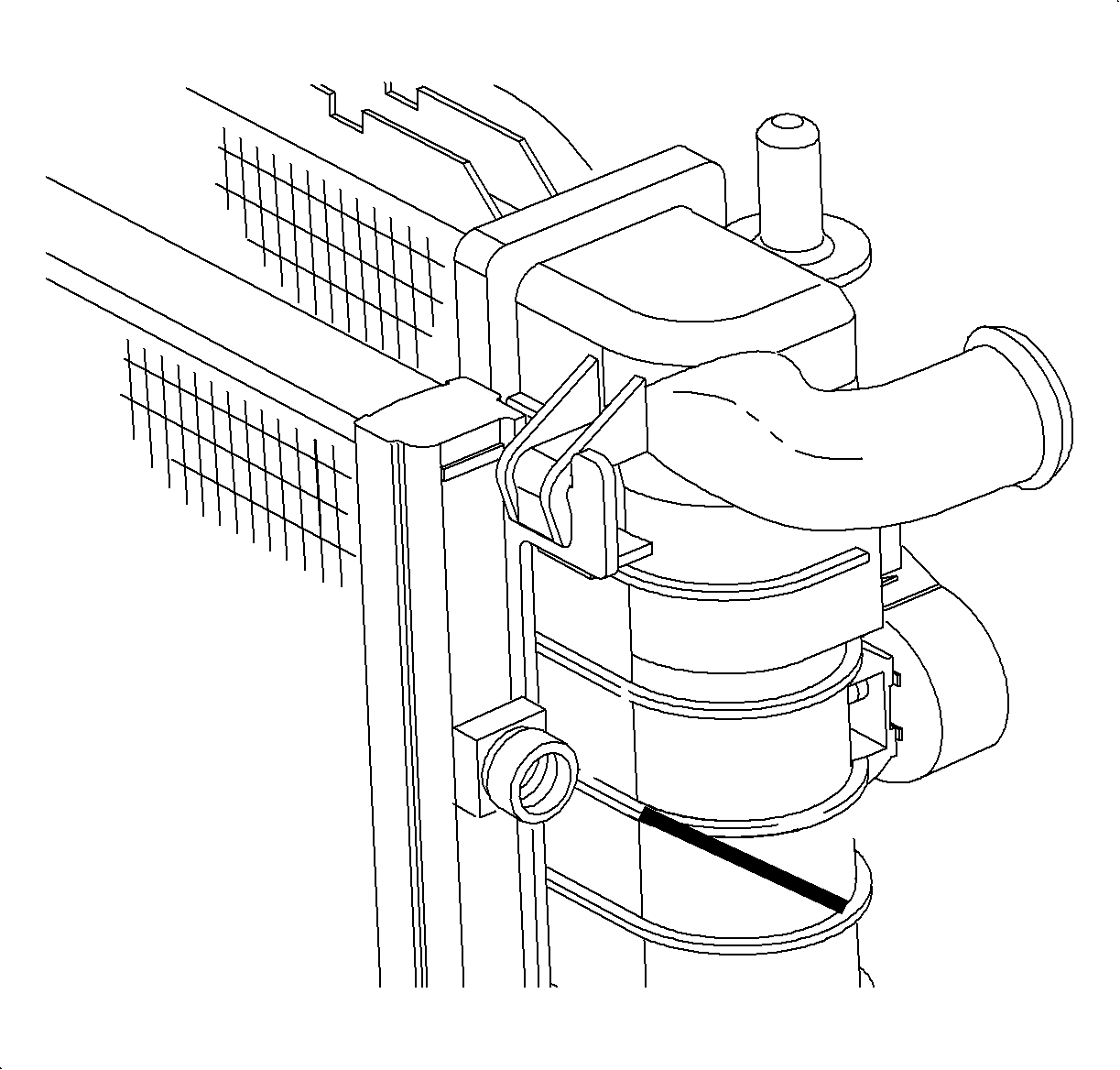
Notice: Refer to Fastener Notice in the Preface section.

Tighten
Tighten the condenser bracket-to-radiator bolts to 6 N·m (60 lb in).
Notice: Use only Polyalkylene Glycol Synthetic Refrigerant Oil (PAG) for internal circulation through the R-134a A/C system and only 525 viscosity mineral oil on fitting threads and O-rings. If lubricants other than those specified are used, compressor failure and/or fitting seizure may result.

Important: Make sure the receiver-dehydrator hose is parallel with the condenser after tightening the fitting. This will provide the hose clearance to the body and frame, avoiding potential damage to the hose.
Tighten
Tighten the receiver-dehydrator hose-to-condenser outlet to 16.5 N·m
(12 lb ft).

Notice: Use only Polyalkylene Glycol Synthetic Refrigerant Oil (PAG) for internal circulation through the R-134a A/C system and only 525 viscosity mineral oil on fitting threads and O-rings. If lubricants other than those specified are used, compressor failure and/or fitting seizure may result.

Important: Make sure the discharge hose pipe is parallel to the line on the radiator end tank. This will prevent the discharge hose from contacting the suction hose and transaxle oil cooler lines, avoiding potential damage to the hoses.
Tighten
Tighten the discharge hose-to-condenser inlet to 23.5 N·m (17 lb ft).
